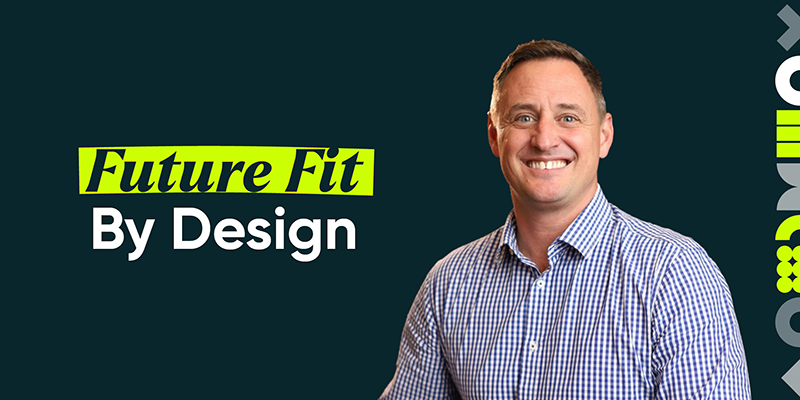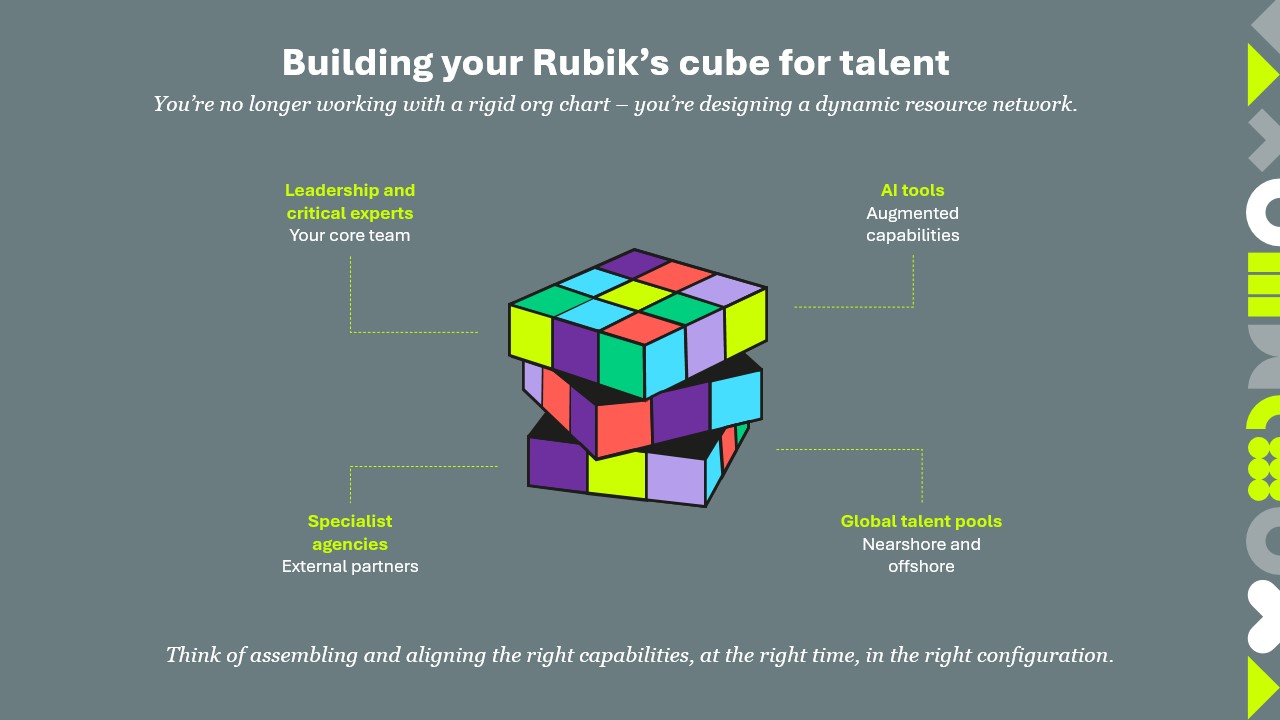Building future-fit teams, where to start
13 Oct 2025

By Roland Glass, Chief Commercial Officer, HelloKindred
How can CMOs build future fit teams that address the challenges of an uncertain and volatile business environment?
This was the topic of conversation during my recent panel with leading CMOs Sarah Thomas and Toni Allen at the Propolis Leaders Forum. As Group Chief Marketing Officer EVP, Capgemini, Sarah is a trusted voice in the M&C B2B industry. As Chief Engagement & Growth Officer for Institution of Engineering & Technology (IET), Toni has recently been part of a group-wide transformation at a large scale and complexity. Both are experts in redesigning marketing teams for excellence and scale in a new era. It was a privilege to share the stage with them and reflect on how to solve for excellence, impact and scale in today’s marketing teams.
CMOs are under pressure
The average tenure of a CMO is the lowest it has ever been. Why? The key skill you need is the ability to effectively lead change and transformation to be successful in an era of uncertainty. As the protagonist of transformation, CMOs need to realise business objectives, address workforce skill gaps, provide and act on data-driven insights, manage global challenges and integrate AI, with a shrinking budget. Understandably, many CMOs feel set up for failure.
Working alongside CMOs amid disruption, I’ve witnessed how rapidly marketing teams have had to adapt—often without the strategy or systems to match the pace of change.
Recalibrating to respond to disruption
The global marketing community has entered an era of uncertainty, and how we respond is our shared challenge.
As trends in talent change, we must take a hard look at the past. Did traditional approaches really work? We built heavily resourced and overly rigid teams and retainers, which suffered from a cycle of hiring, upsizing, and downsizing – rinse and repeat. Access to talent shrinks when we are designing our teams for full-time roles in the office. Agile talent approaches allow for marketing teams to be built for agility, in a way that is aligned to the needs of the business and to the desires of today’s creative talent.
During the pandemic, the largest work-from-home experiment undertaken in the professional knowledge worker era was a success and is here to stay. Now, we have five generations in our teams, where everyone wants to live and work differently. At HelloKindred, we are increasingly seeing a desire for talented marketers and creatives who seek portfolio careers, where experience takes precedence over tenure. They want to work on different brands, across markets, deploying their skills and passion globally, as well as seek opportunities for exposure, continuous growth, retooling, and staying relevant.
Talent wants to engage differently in how they work and what they value as meaningful work. The new workforce needs flexibility and agility. Access to talent expands when you embrace this change. The future lies in resource networks that align with your desired output in real time.
Shifting to a future-fit team
How do you change from an outdated blunt to a future-fit sharp instrument? How do you discern the right skills for the job for the right amount of time in the right location?
We don’t want build rigid, slow-moving resources and structures that hinder adaptability and response time in uncertain environments. CMOs need to start thinking about using sharp instruments for every task and project.
For this reason, we should be asking ourselves and our leadership teams whether they are resourced for flexibility and if their marketing functions are agile and quick to pivot. Within this resourcing model, leaders need to understand their resource mix, from specialist skills for specialist tasks, to pods, hubs, nearshore and offshore resources.
We asked this very question in a survey taken among the delegates at Propolis. We found that a CMO’s resource network is strongest at the leadership (75%) and core talent level (70%), supported by targeted external partners such as specialist agencies, creative studios (67%-69%). However, scalability levers such as offshore pods, freelancers, staffing and AI-driven augmentation are currently weaker (from 40%- 60%), leaving open an opportunity to modernise and balance the network.
Tips to build a future-fit team
- Build your Rubik’s cube: You’re no longer working with a rigid org chart — you’re designing a dynamic resource network. Think of each face of this cube as a flexible lever. You’re assembling and aligning the right capabilities, at the right time, in the right configuration.
- Move from blunt to precise: Instead of static roles and slow-moving hierarchies, we need a sharper instrument. This model lets us plug in the right skills, whether it’s core leadership, AI tools, or global talent pools, only when and where they’re needed.
- Free up your core team: Your leadership and critical experts should focus on high-value work such as strategy, transformation and big bets, not tactical execution. Let specialist agencies, augmented talent networks, pods, and project-based hubs handle the rest.
- Design for adaptability: The goal isn’t just today’s delivery — it’s building a target operating model that can flex with demand, scale smartly, and unlock sustained value.

Remember the African proverb: “If you want to go fast, go alone. If you want to go far, go together.”
Developing a model helps you go far. By integrating internal and external talent, as well as nearshore and offshore resources into one cohesive problem-solving engine you can reach your goal in new and agile ways. If we want future-fit marketing teams, we need to move beyond traditional models and start thinking like systems designers, today.
Interested to find out more on how CMOs rate their marketing teams? Click here to discover key takeaways and insights from the survey taken at the Propolis Leaders Forum.




